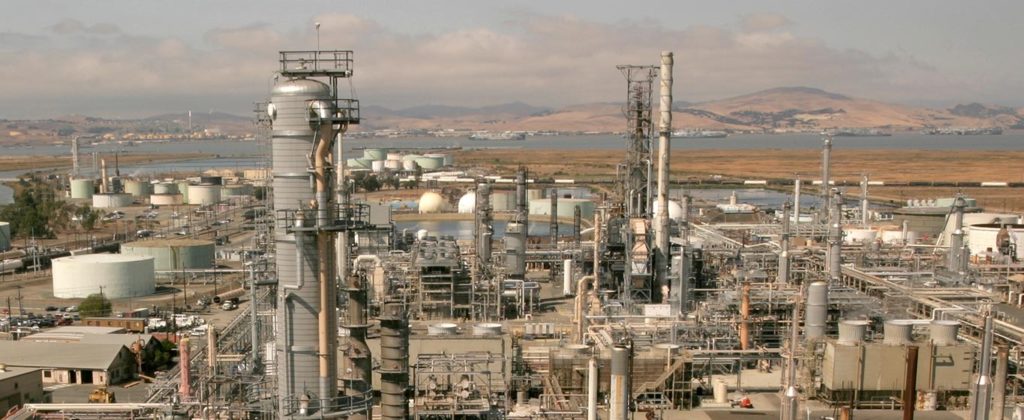Motorists in the Midwest are feeling the pinch at the pump as gasoline prices have surged by an average of 27 cents per gallon in recent days, largely due to an unexpected outage at BP’s Whiting refinery in Indiana. This disruption comes at a particularly inopportune time, just ahead of the Labor Day weekend, when millions of Americans hit the road for one last summer getaway. In this article, we’ll break down the causes of the shutdown, its expected duration, the potential ripple effects on holiday travel, and how this temporary hiccup stacks up against California’s looming permanent loss of refining capacity in 2026.
The Whiting Refinery Outage: Weather Woes Strike Hard
The BP Whiting refinery, one of the largest in the Midwest with a processing capacity of about 440,000 barrels per day, was forced into a sudden shutdown following severe thunderstorms that battered northwest Indiana on the early morning of August 19, 2025.
Are you Paying High Taxes in New Jersey, New York, or California?
The storms brought heavy rainfall, leading to widespread flooding that inundated the facility and disrupted operations.
Flaring— the controlled burning of excess gases—continued for days afterward as crews worked to stabilize the site, raising concerns among local residents about air quality and safety.
Initial assessments suggested the impact might be minimal, but the outage has proven more prolonged than anticipated.
The flooding affected key units, including crude distillation and catalytic crackers, halting production and tightening regional fuel supplies.
BP has been actively working on recovery, with reports indicating that the refinery is in the process of restarting operations.
However, the full timeline remains fluid; sources suggest the facility could be offline or operating at reduced capacity for up to a week or more from the initial shutdown date, potentially extending into late August.
In response, the U.S. Environmental Protection Agency (EPA) issued a fuel waiver effective from August 9 through August 28, 2025, to help alleviate shortages by relaxing certain gasoline standards in affected areas.
This isn’t the first challenge for Whiting in recent years; the refinery faced a six-month shutdown in 2024 due to a hydrogen leak, highlighting ongoing vulnerabilities in aging infrastructure.
Weather-related disruptions like this underscore the risks posed by extreme events, which are becoming more frequent amid climate change.
Immediate Fallout: A 27-Cent Spike and Broader Market Pressure
The outage has directly contributed to a sharp rise in gasoline prices across the Great Lakes region, with averages jumping 27 cents per gallon in states like Indiana, Illinois, Michigan, and Ohio.
In some areas, such as upper Michigan, prices have spiked by 18 cents just ahead of the holiday travel period.
Analysts warn that this could lead to the highest gas prices of 2025 in the Midwest, exacerbating costs for consumers already grappling with inflationary pressures.
Nationally, gas prices have been relatively stable this summer, hovering in the mid-$3 range due to steady crude oil prices in the $60s per barrel.
However, the Whiting disruption has created a localized crunch, with the Midwest seeing prices about 4.2% below the national average of $3.12 per gallon but still trending upward.
Impact on Labor Day Weekend Traffic: A Mixed Bag for TravelersWith Labor Day falling on September 1, 2025, the timing of this outage couldn’t be worse for holiday road trippers. AAA projects a surge in travel, with millions expected to drive, drawn by what were anticipated to be some of the lowest gas prices in years—potentially dipping below $3 per gallon nationally by fall.
But in the Midwest, the price spike could dampen enthusiasm.
Higher fuel costs may lead some families to shorten trips, opt for closer destinations, or even cancel plans altogether, particularly for budget-conscious households. For instance, a 27-cent increase on a 20-gallon fill-up adds about $5.40 per tank, which can add up over a long weekend. Traffic volumes might see a slight dip in affected states, though overall U.S. travel is still forecasted to rise compared to last year, buoyed by lower national averages.
The EPA’s waiver should help stabilize supplies, but if the outage lingers, shortages at pumps could cause lines and further frustration for drivers. On a positive note, experts like those at GasBuddy suggest that broader market trends— including easing demand as summer winds down—could prevent a nationwide escalation, keeping the impact contained to the region.
A Small Blip vs. California’s Brewing Crisis: Comparing the Scale
While the Whiting outage is a significant but temporary setback—likely resolved within days to weeks—it’s dwarfed by the structural challenges facing California’s refining sector. By 2026, the Golden State is poised to lose approximately 17-20% of its oil refining capacity due to the planned closures of two major facilities: Phillips 66’s Rodeo refinery (already in transition) and Valero’s Benicia refinery, set to shutter by the end of April 2026.
These closures stem from stringent environmental regulations, low profit margins, and a state push toward renewable energy and electrification.
California’s unique gasoline blend requirements already isolate it from national markets, making it prone to price volatility during outages. Unlike the Whiting event, which is weather-induced and short-term, California’s losses are permanent and won’t be offset by declining demand, as gasoline consumption remains high at over 1 billion gallons per month.
Price impacts tell the tale: The Midwest’s 27-cent spike is painful but fleeting, with prices expected to normalize post-restart. In contrast, California could see gas prices soar to $8 per gallon or more in 2026, according to industry forecasts, as reduced capacity exacerbates shortages during peak demand or any disruptions.
This could ripple to neighboring states like Arizona and Nevada, which rely on California supplies.
Lawmakers have attempted measures like refiner margin caps to curb profiteering, but critics argue these policies have accelerated the exodus of refiners.
In essence, the Whiting incident serves as a reminder of how fragile energy infrastructure can be, but California’s situation highlights the perils of aggressive decarbonization without adequate backups. As the U.S. transitions to cleaner energy, balancing supply reliability with environmental goals will be key to avoiding such shocks.Stay tuned to Energy News Beat for updates on fuel markets and energy trends. Drive safe this Labor Day!
Avoid Paying Taxes in 2025
Crude Oil, LNG, Jet Fuel price quote
ENB Top News
ENB
Energy Dashboard
ENB Podcast
ENB Substack

